Click here to go to Emma’s Historical Context page (next)
Click here to go to Emma’s Fashion History page
Click here to go to Emma’s Design Development page
Continue below to see the finished project

1836, Emma C

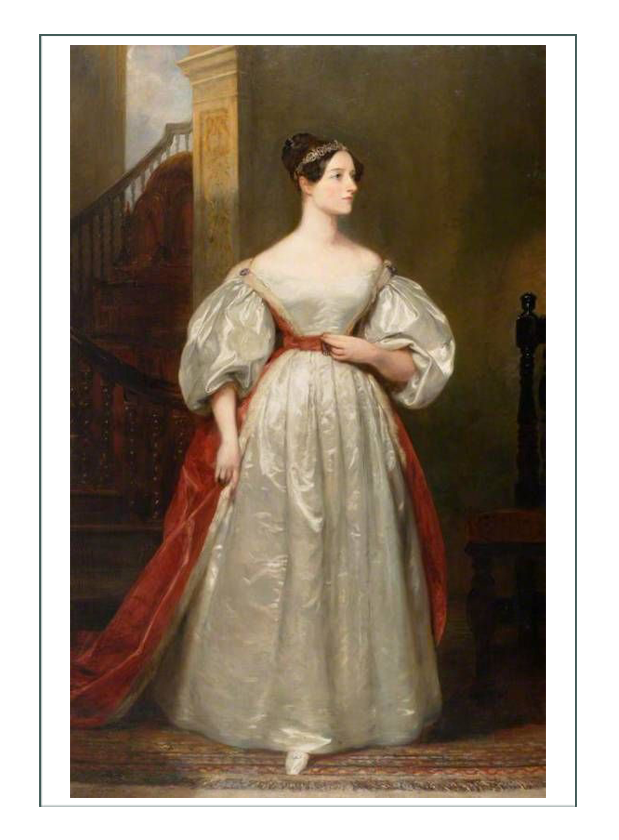
Wearing Many Hats – or Bonnets
Emma will be playing several roles in her job for a renowned “living history environment” in the Midwest. She is working with anthropologists, and came to us because they require historical accuracy in the costuming of all docents, and the volunteers are required to provide their own.
This is an EXCITING opportunity for us to create original designs for a special Gal who values history so much she wants to “live it to teach it” as only a young teen. We respect Emma’s privacy, as she is a minor, so we will not be discussing the location or specifics of her project, and will only post photos of her with her parent’s permission.
We are also intrigued by the project because there are few to no patterns nor guidelines out there – just the few commercial patterns we would bet her peers will be using to sew their own garments. It gives us a chance to show OUR stuff too in creating an original interpretation that is suitable for her age, character, and body type.
Specific Roles Assigned
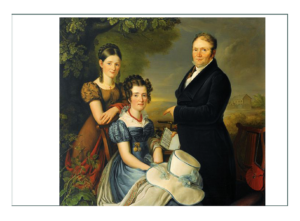
At this living history site, the anthropologists have written a type of “script” with the roles each docent and interpreter will be playing. Volunteers like Emma choose a role or roles they will play. They must study these and be able to speak and act in that role as they interact with other staff and volunteers.
Emma is also young, and will continue to grow, so she needs to be able to use the parts of her ensemble not only for a variety of interpretations this year, but hopefully in years to come. This makes more challenge for us, but it’s really not so hard, because women of history “stretched” their resources and reused, remade, resized, and wore their garments down until they became rags. We hope she’ll love it that much.
Emma’s Characters
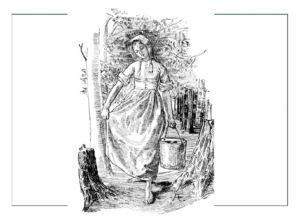
This section has been removed at the request of anthropologists. We have used all their information that we could find, and used that in combination with the research on the other Emma pages to develop the summaries below and the resultant designs.
Additional research and data that went into this include: section on Colonial Children, which applies to the attitudes towards girls even at this m the 1805 Ensemble regarding girls and the plantation. Also an earlier era, but attitudes apply, because of attitudes towards girls and women, and on Emma’s historical context page, at the bottom is an article about “Mill Girls” of the 1830’s and 1840’s in Massachusetts, and how they earned money and lived independently very similarly to Emma’s character.
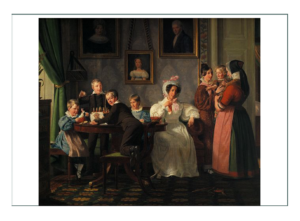
Traits of Selected Characters
- Work on farms with the family
- Plus work at a public inn
- Young
- Knows role in life and expectations
- Important part of a family
- Agriculturally based
- Curious about what’s outside the agricultural town
- Enjoy meeting people
- Hard working; keeps busy
- Inquisitive – look for answers and to learn
- Slightly educated, possibly basic reading
- Very young, but growing old quickly by life’s lessons
- Has had life experiences outside the present location
Key Objectives
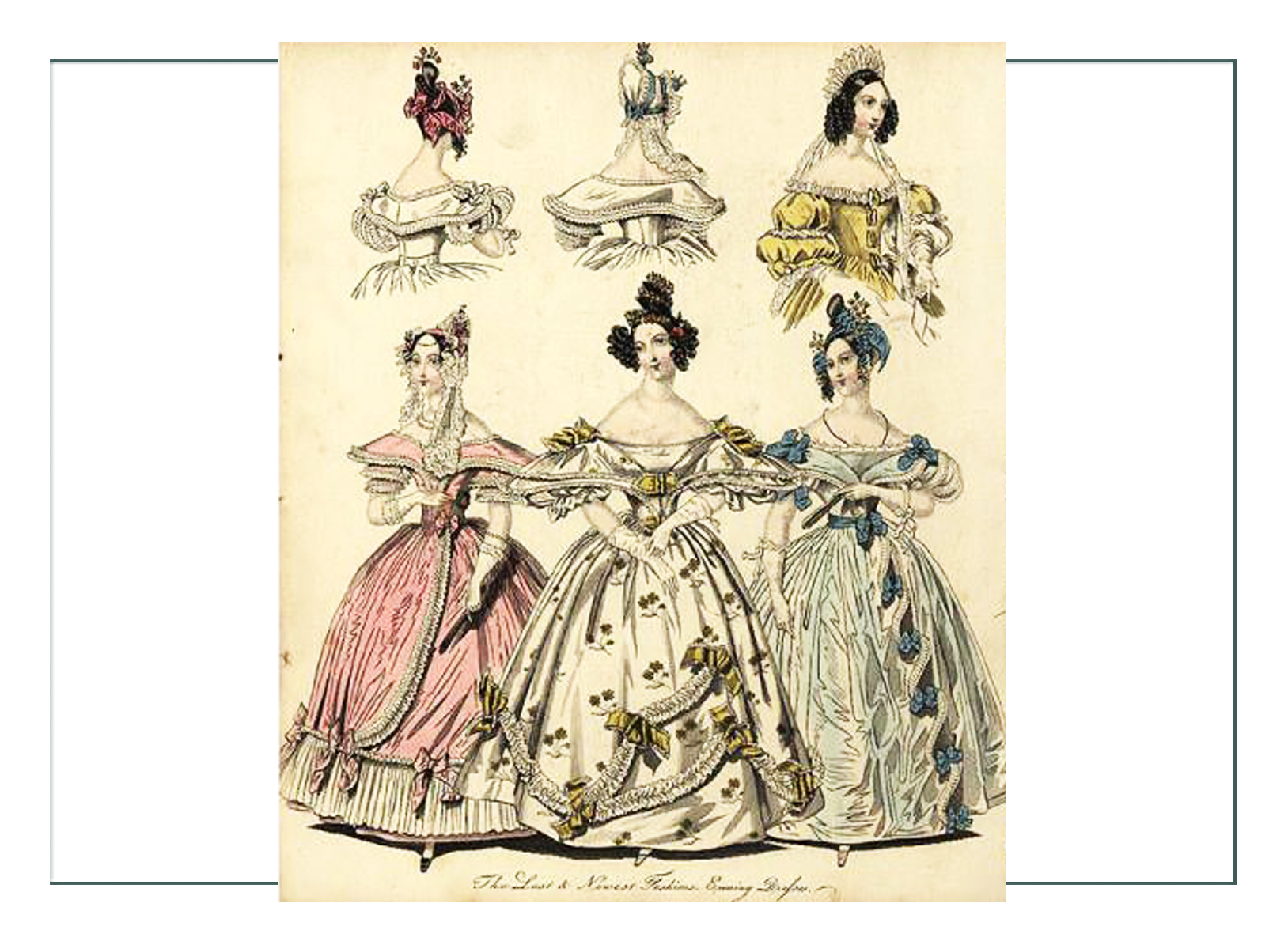
The main practical objectives for this project will be:
-
Satisfy the anthropologist(s) in charge with historical accuracy of design, fabric, dye, notions, fit, and overall appearance;
- Teach Emma about why she is wearing what, so that she can use her ensemble to teach others with full range of knowledge including the historical era, fashion history, women’s roles, and how she fits into the environment(s) at the living history facility;
- Make a comfortable ensemble that she can get in and out of (with practice) that helps her to FEEL authentic to enhance her own experience, so she can share that with others (e.g. “this corset keeps me from bending, but supports my back and it is not too hot to wear”, etc.) ;
- Use all natural fabrics consistent with 1836 so she is comfortable in high heat and humidity of a Midwestern summer;
- Have excellent and flawless fit so intuitively anyone looking at her “feels it’s right”;
- Have durable garments properly instructed for a young girl as we know young girls tend to get in a hurry and forget to put their petticoats over their heads;
- Build something she likes – that pleases her and makes her feel pretty and good – thus the “elegant” part of itl
- Meet her budget and timeline. We have 11 weeks to ship, and we will need all the time.
- Design for future growth and extended use; especially undergarments.
The Main Depiction Objectives for this will be:
- Correct age
- Agricultural depiction
- Working ensemble that goes from field to table and to family event
- Low economic and social status (but reaching out)
- Youth, comfort, allowance for growth
- Might need to dress up (to go courting, to town, to events)
First, we must study the time period, fashion era(s), personal tastes, and other factors that will direct the design:
Click here to go to Emma’s Historical Context page (next)
Click here to go to Emma’s Fashion History page
Click here to go to Emma’s Design Development page
Continue below to see the finished project

The managers of the Living History facility have stated volunteers may not work with “outsiders” (meaning us). Parents are required to just “make a pattern” that the facility will provide. We hope they will also provided approved vendors and fabrics plus instructions, because it is really not possible to just “sew a pattern” for this era if one is to be historically accurate as was our objective here.
Emma will have to work directly with their administration, and we are no longer involved in the project in any way; not even advisory at the request of the facility managers.
Instead, we will build the costume for one of our “Buffalo Gals” for our own educational purposes. Following are minor changes to the final project design to be consistent with the other ensembles in our historic projects and fashion shows which will focus on “working women” through the fashion eras.
We have selected this fabric for the dress:
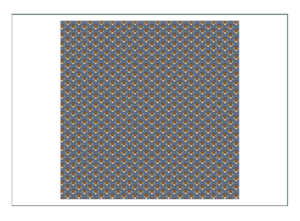
And these undergarments with this dress design:
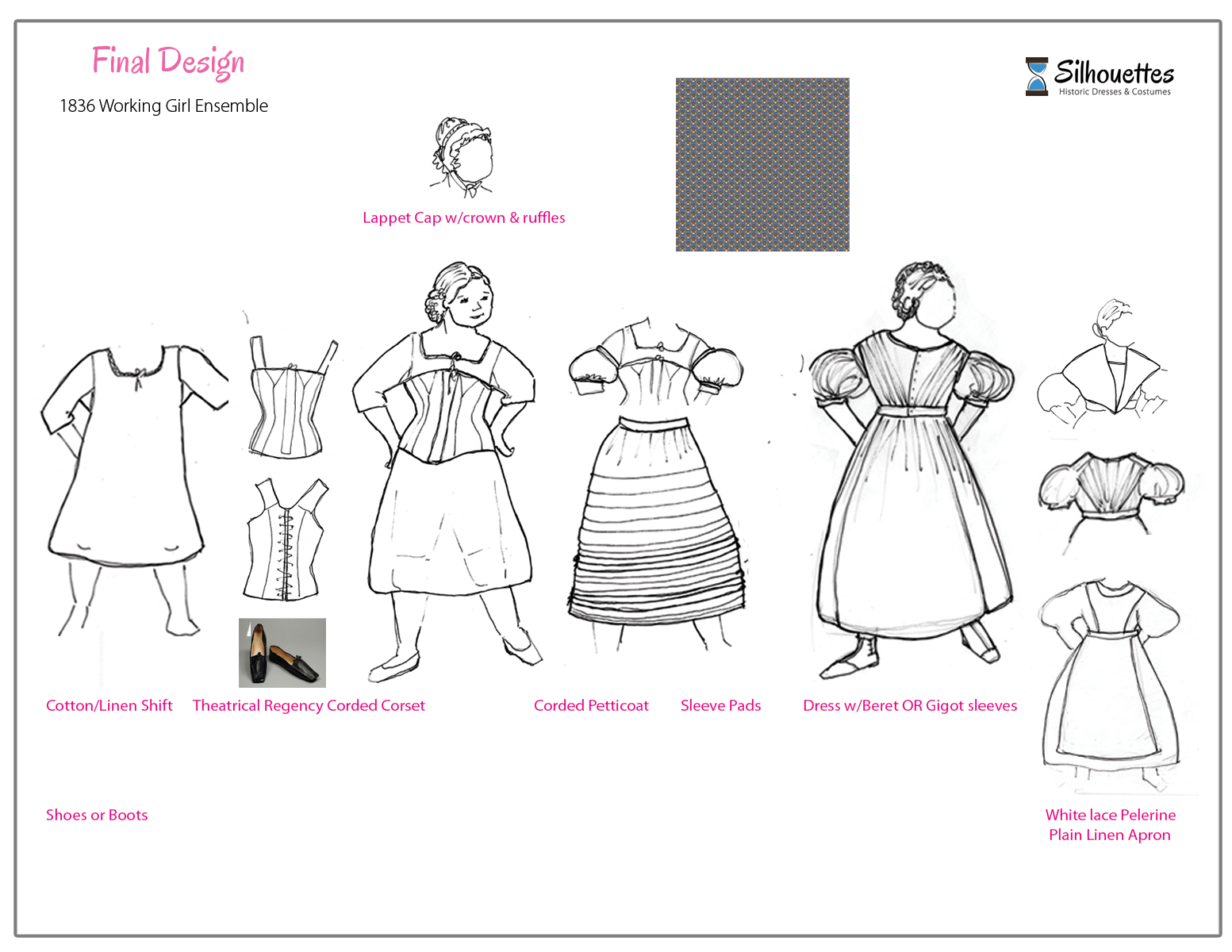
The major change is that we will build either a theatrical corded Regency corset – or – the complex stringed version. The other change is the possibility of making beret sleeves, and the plain pelerine and apron instead of ones with fancywork. It will be very simple and basic for a low class working girl.

Link will be provided as project is built to “jump” to the appropriate Gal to see the finished garments when done.
